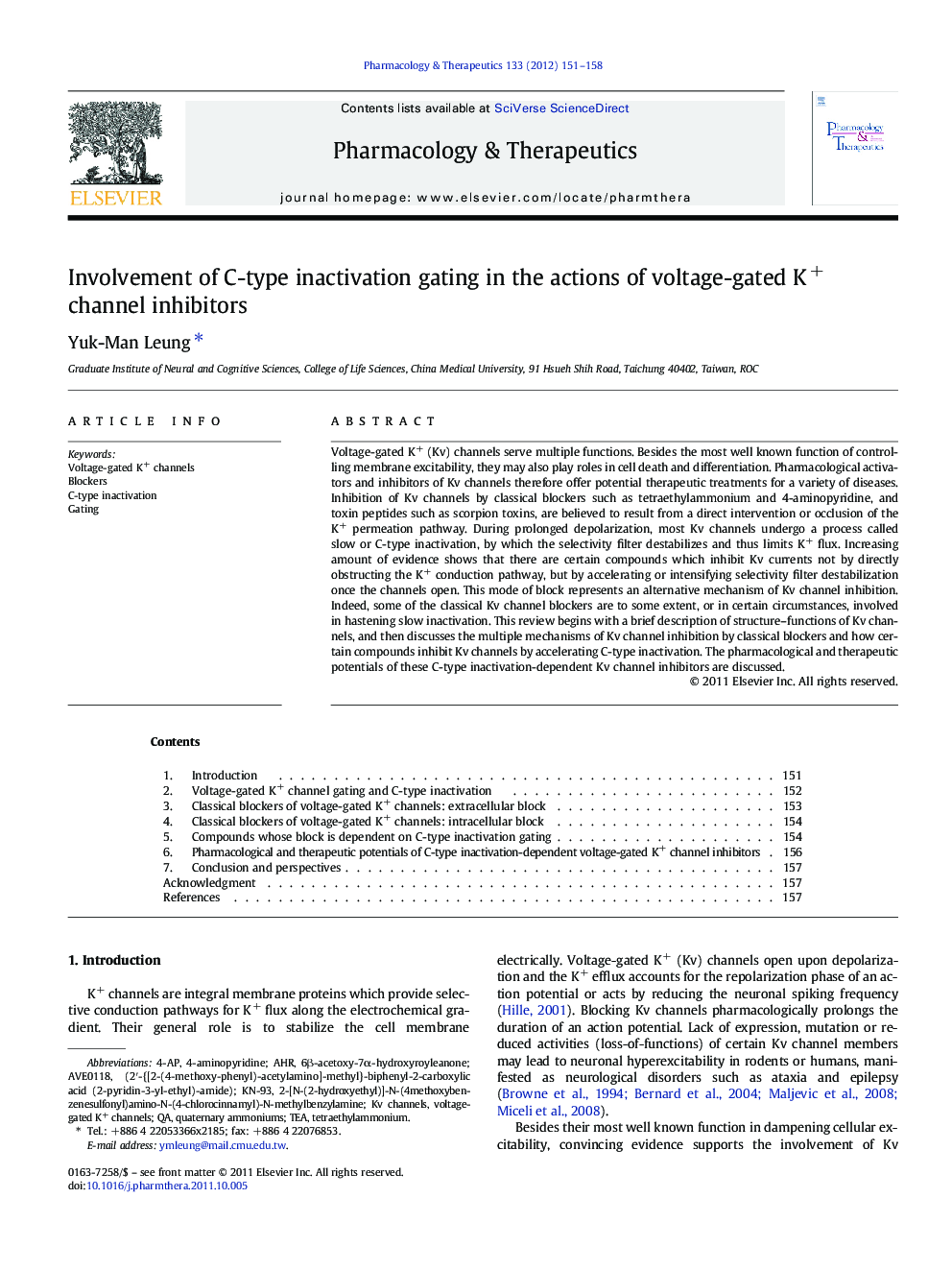| کد مقاله | کد نشریه | سال انتشار | مقاله انگلیسی | نسخه تمام متن |
|---|---|---|---|---|
| 2563286 | 1127514 | 2012 | 8 صفحه PDF | دانلود رایگان |

Voltage-gated K+ (Kv) channels serve multiple functions. Besides the most well known function of controlling membrane excitability, they may also play roles in cell death and differentiation. Pharmacological activators and inhibitors of Kv channels therefore offer potential therapeutic treatments for a variety of diseases. Inhibition of Kv channels by classical blockers such as tetraethylammonium and 4-aminopyridine, and toxin peptides such as scorpion toxins, are believed to result from a direct intervention or occlusion of the K+ permeation pathway. During prolonged depolarization, most Kv channels undergo a process called slow or C-type inactivation, by which the selectivity filter destabilizes and thus limits K+ flux. Increasing amount of evidence shows that there are certain compounds which inhibit Kv currents not by directly obstructing the K+ conduction pathway, but by accelerating or intensifying selectivity filter destabilization once the channels open. This mode of block represents an alternative mechanism of Kv channel inhibition. Indeed, some of the classical Kv channel blockers are to some extent, or in certain circumstances, involved in hastening slow inactivation. This review begins with a brief description of structure–functions of Kv channels, and then discusses the multiple mechanisms of Kv channel inhibition by classical blockers and how certain compounds inhibit Kv channels by accelerating C-type inactivation. The pharmacological and therapeutic potentials of these C-type inactivation-dependent Kv channel inhibitors are discussed.
Journal: Pharmacology & Therapeutics - Volume 133, Issue 2, February 2012, Pages 151–158